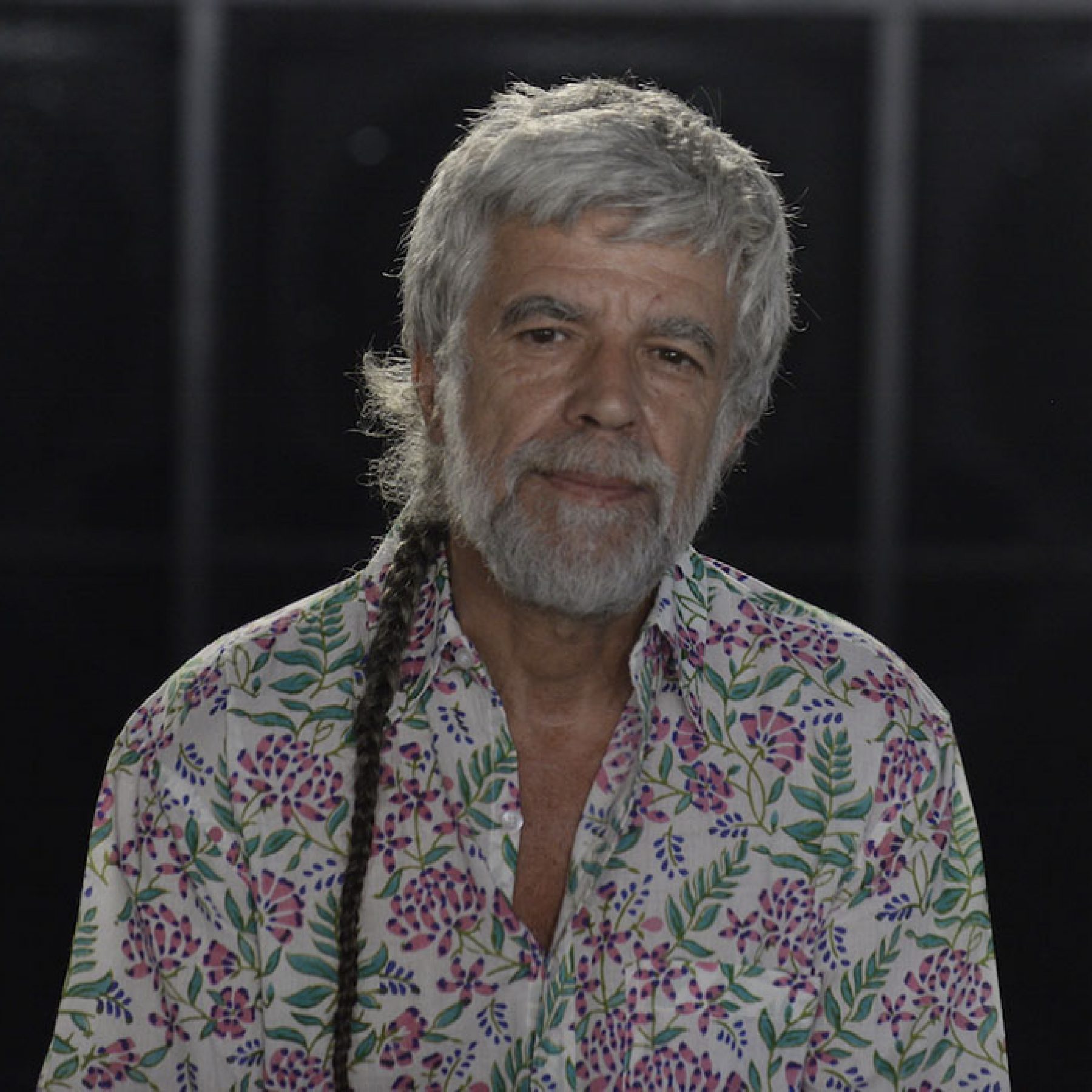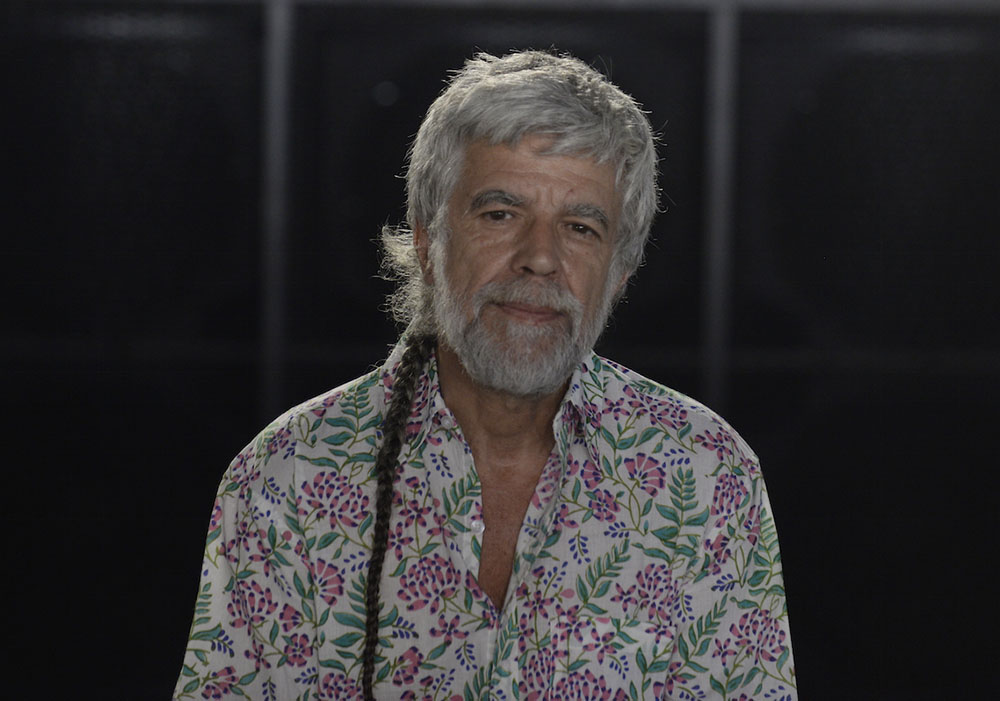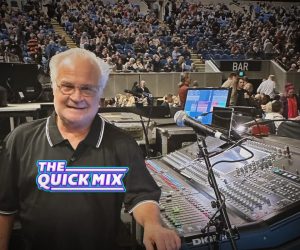
Last Word with Tony Andrews, Part 2

with Tony Andrews
Tony Andrews is a director of Funktion-One and co-founder of Turbosound with John Newsham. Pictured is a more recent image of Tony. Check out last issue’s Last Word for Tony’s reflections on the early years of Turbosound.
After we’d successfully introduced Flashlight in 1989, by 1992 John Newsham and I had, sadly, allowed ourselves to be out-manoeuvred business-wise. Turbosound was sold, via AKG, to (audio giant) Harman. I’m always keen to tell people that John and I were out-voted; our ownership was too diluted to stop that move. It was a great shame; a pretty sad moment.
We went on to form a new company: Funktion-One… and, I’ve got to say, what we’ve been able to do with better drivers and waveguide innovations, I could only have dreamed of back then.
I don’t think the live sound industry has progressed that far. People’s memories are short. In fact, I’d go as far to say that we’ve been living through a time of complete audio nonsense littered with retrograde ‘improvements’. Line array is not entirely wrong but the components are. How many versions of [L-Acoustics’] Christian Heil’s concept do we actually need? For starters we’re expecting dispersion control out of a box that’s less than a metre wide, when in fact you’ve got no physical containment below midrange frequencies. You’re practically omnidirectional. I understand people want their PAs small and they also want them in a line, but in the process the market now has some pretty anaemic-sounding systems. If I do get out and hear other manufacturers’ systems I typically hear some very wobbly bass, a lot of high/mid harshness and not a lot else, to be perfectly frank. It’s pretty poor. People think we’ve come forward. Well, systems get into the air faster and they’ve become more idiotproof, but the results are typically uninspiring.
Multi-cellular beam steering? Well, maybe control has got better but the original V-DSOC is still one of the best line arrays out there. Beam steering means you’re relying on digital more than ever and if you’ve not got your digital signal path absolutely bang on, you’re worse off than you were.
The analogue versus digital debate has not gone away, which, after 30-odd years, means there’s something seriously wrong with digital. One of the main differences is: analogue doesn’t have timing problems. To get digital fit for human consumption, the way that analogue naturally is, you have to get so many more things correct — converters, clocks, algorithms — it’s crazy.
The AES protocol is just dreadful — it doesn’t really work. Dante is going through the roof because it actually does work. (We’re very impressed with Dante and are using it where we can.) It does shine a light on just how bad AES can be. The AES protocol stems from the ’80s when digital was in its infancy. It sends timing information with the packets of audio and it trips up badly. If you’ve got both ends of the game nicely matched, with short, high quality cable, it’s going to be okay. Send it any length and things get quite fuzzy and mostly it goes wrong with regard to audio quality. I’ve had direct experience with this. The fact the industry can put the AES protocol on a pedestal is proof of how far we’ve lost our way. If you had decent speakers and decent mixers you’d hear the problems for yourself.
The biggest factor in digital is the clock source. Good clocks are expensive.
Can I think of a decent digital desk out of the box? The SSL Live has made us feel comfortable and the Roland Ohrca sounds really good. Most other mixing desks have varying degrees of sub-standard sound, but if you’re listening to them on what’s presented as ‘world class audio gear’ these days, you’re not going to hear the difference.
We make no bones about it, Funktion-One is about the truest audio quality we know how to muster. We’re still making breakthroughs with loudspeaker components. If you want a system to sing, that’s where it’s at: in the componentry. That was the thinking behind our new Vero system.
What’s a ‘line array denier’ doing building a system like Vero? Line array is never going to give you a proper dimensional, stereo sound because of all the multiple arrivals — that’s a fact. It’s never been my idea of audio and I wasn’t going there. But circumstances arrived that I had to… mainly I got pressure from my wife!
So I thought long and hard to find a positive about line array. I came up with this: they’re fast to rig. Trying to get a point source cluster organised is a business and line array is much easier. But the real kicker for me was, a line array allows you to do something with dispersion you can’t do with a point source. So we started working on horn arrangements that were giving us some very encouraging summations.
Vero is neither a point source nor a line array — we might have gone somewhere beyond those two. It’s not working on line array principles. It’s something quite new. Put it this way, when the wind blows it’s way more resistant to the phasey sound of it coming and going. We’ve been keeping a lot of it under our hat but Vero uses 15s, 10s and 1.4-inch drivers. Using the 10s has been a feature of what we’ve always done. The voice coils are more powerful; loading is way more sophisticated… we’re up to 109dB 1W/1m.
About six months ago I threw the towel in and said: we’re going to have to use some EQ on Vero, we cannot fix this. I was very uncomfortable about resorting to EQ. Happily we had an out-of-the-blue breakthrough which meant we’ve not had to apply corrective EQ after all.
You can’t bludgeon a loudspeaker into doing a nice job. The speaker, enclosure, horn, whatever, is best if it just naturally does the right thing without needing to squeeze it in any particular direction. That’s when you get the most open, natural and immediate sound. That’s been my experience in all this time.
Inspirational signoff? Try this: Michelangelo said: “The greatest danger for most of us, is not that our aim is too high and we miss it, but that it is too low and we reach it.” I enjoyed that — and you’re not going to argue with Michelangelo are you?
















please find my website Tony would love to talk buddy you still have my wonderful one sided platt give my love to Ann